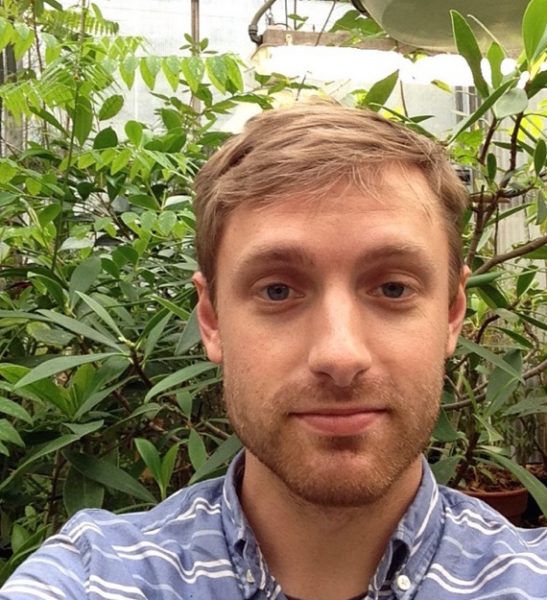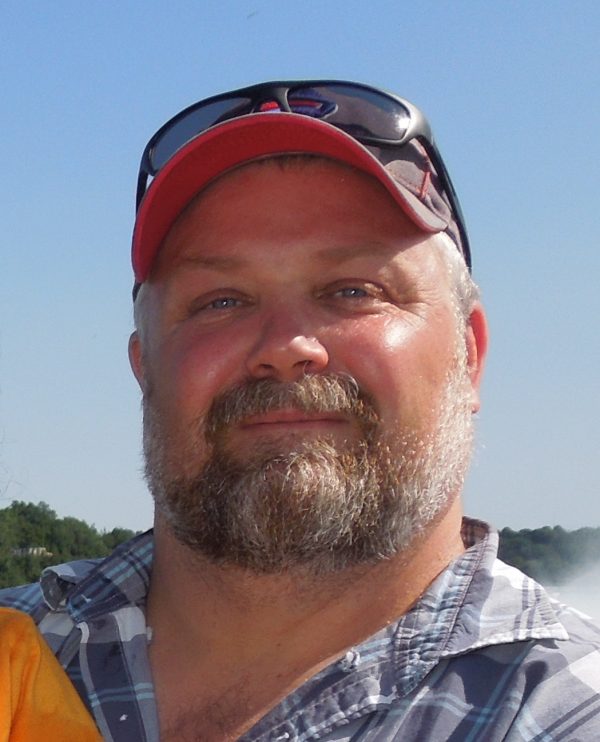The Florida Museum of Natural History recently announced the winners of the 2017 Austin Award and Bullen Award, given for student research and significant contributions to the development of museum collections and programs.
Greg Stull received the Austin Award for his work on molecular botany and paleobotany as a biology doctoral student.
Mark Donop, a doctoral student in anthropology, received the Bullen Award for his analysis of the Florida Museum’s largest pottery collection.
Stull researched Icacinaceae, a family of flowering plants that includes tropical woody vines, trees and shrubs. Scientists were not sure which genera should be included in the family, an issue Stull worked to fix.

Photo courtesy of Greg Stull
He integrated fossils with modern DNA sequencing to better illuminate the plants’ evolutionary history. His research with Florida Museum scientists Pam Soltis, distinguished professor of polyploidy and plant phylogenetics and curator, and Steve Manchester, curator of paleobotany, also led to an improved understanding of how organisms diversified and migrated around the earth through time in response to geologic and climatic changes.
“Greg is a unique combination of paleobotanist, a molecular phylogeneticist and a plant evolutionary biologist,” Manchester said. “His abilities allow him to pursue research that will be impossible for most plant evolutionary biologists, and we anticipate that he will be a leader in botanical circles in the years to come.”
Stull now has a postdoctoral position with the University of Michigan, funded by the National Science Foundation.
The Austin Award is named after Oliver L. Austin, a former Florida Museum ornithology curator. The award recognizes students conducting research in the natural sciences, with preference given to students studying organism, population and ecosystem studies by completing notable fieldwork and using Florida Museum collections.
Donop, recipient of the Bullen Award, studied about 90 types of Weeden Island pottery in a collection of more than 600 vessels at the museum and about 100 from other collections, in addition to completing fieldwork.

Photo courtesy of Mark Donop
The pottery is defined by its ornate decorations and vessel forms that were used across Florida and other areas in the southeast U.S., said Neill Wallis, museum associate anthropology curator and Donop’s research adviser.
The pottery from these societies may be the only pre-Columbian pottery from the southeast U.S. found exclusively in mounds and dates to about 1,500 years ago, he said.
Donop’s archival research and artifact analysis shows an unexpected diversity in the materials found in the mounds, Wallis continued.
“It’s an amazing amount of work,” he said. “And his detailed approach is quite useful for inferring the histories of many other mounds that are poorly understood or that were destroyed before they could be properly documented.”
By studying the pottery, Wallis said, anthropologists will be able to better understand and preserve the culture of early Florida and Caribbean societies.
“Mark has shown that bringing together a diversity of pottery styles from dissimilar places was a critical part of burial mound ceremonies on the Gulf coast,” Wallis said.
The Bullen Award, named for former Florida Museum archaeology curator Ripley P. Bullen, recognizes students conducting research on the anthropology of Florida or the Caribbean Basin.
Learn more about the Paleobotany and Palynology Collection, the Florida Archaeology Collection and the Caribbean Archaeology Collection at the Florida Museum.